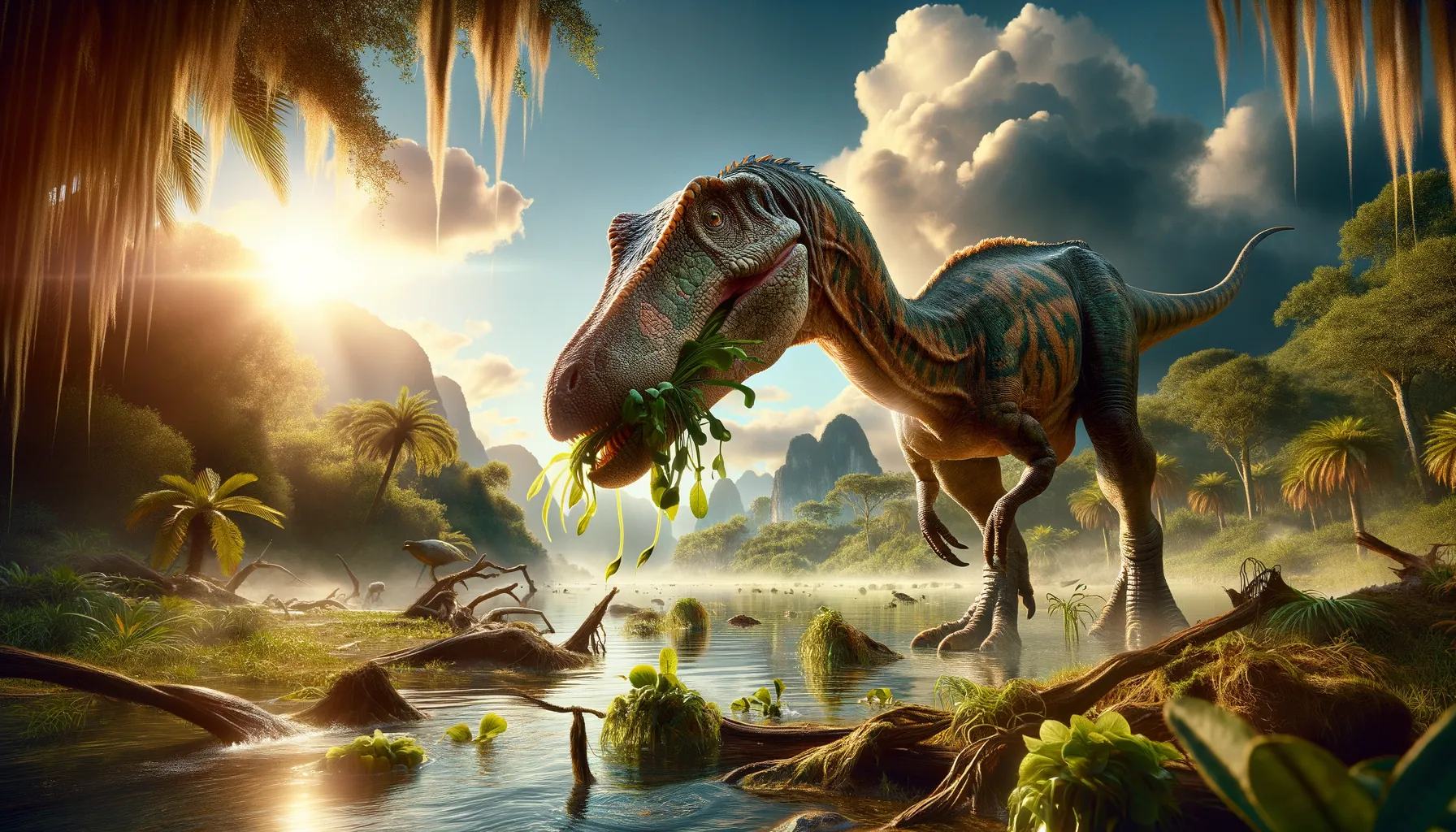
Amurosaurus
Duck-billed giant of the ancient East.
Period
Cretaceous
Length
Approximately 8 meters long.
Height
Around 3 meters tall at the hip.
Weight
Approximately 3 to 4 tonnes.
Amurosaurus, a hadrosaurid dinosaur, was a herbivorous creature that lived during the Late Cretaceous period. Known for its duck-billed snout, it roamed ancient river deltas, feeding on the lush vegetation that thrived in those regions. Fossil evidence found primarily in Russia provides insights into its life and ecology. As a member of the Hadrosaur family, it shared many features with other duck-billed dinosaurs.
Diet
Amurosaurus was herbivorous, feeding on a variety of plant material. Its diet likely included leaves, twigs, and possibly fruits that were abundant in its habitat.
Hunting
Being a plant-eater, Amurosaurus did not hunt. Instead, it foraged through its environment, using its broad snout to gather food.
Environmental challenges
Amurosaurus faced challenges such as fluctuating climates, which affected food availability. Predatory theropods posed a constant threat, requiring vigilance and herding strategies. Evolving landscapes, such as changes in river patterns, could disrupt habitat consistency, urging adaptability.
Speed
The Amurosaurus likely moved at moderate speeds due to its large size.
Lifespan
The Amurosaurus might have lived for several decades.
First discovery
Amurosaurus was first discovered in Russia in the Amur River region.
Fun Facts
- Amurosaurus was a duck-billed dinosaur that lived about 66 million years ago during the Late Cretaceous period.
- Its name means 'Amur lizard,' named after the Amur River near where its fossils were found in Russia.
- Amurosaurus was a herbivore, primarily eating plants, with teeth designed to chew tough vegetation.
- This dinosaur is part of the Hadrosauridae family, which is known for having crests or hollow tubes on their heads, used for communication or display.
- Amurosaurus could grow up to about 8 meters long, roughly the length of three cars lined up.
- Its fossils were discovered in the Amur Region of eastern Russia in the late 1980s, highlighting the region's rich dinosaur diversity.
- Amurosaurus likely moved in herds, offering them protection from predators as they roamed the ancient landscapes.
Growth and Development
Amurosaurus grew rapidly, reaching near full size within a few years. This fast growth helped it avoid predation by achieving a size too large for most attackers. Juveniles likely stayed close to adults for protection until reaching greater maturity.
Habitat
Amurosaurus inhabited humid, riverine environments with abundant plant life. These areas supported rich ecosystems that provided ample food and resources. Seasonal changes influenced the availability of resources, driving migratory behavior in search of lush, leafy areas.
Interaction with other species
Amurosaurus lived alongside other herbivorous dinosaurs, often cohabiting or moving in groups. This social behavior helped deter predators and facilitated cooperative feeding strategies. Predators also thrived in these environments, creating dynamic interactions between prey and predator species.
Natural lifespan
Natural lifespan estimates suggest Amurosaurus could live up to 25 to 30 years in the wild.
Reproduction
Reproduction involved laying eggs in nests, often in group settings for protection. Nesting sites were crucial for the survival of hatchlings, which were vulnerable to predation. The presence of eggs in clusters suggests complex reproductive behaviors, possibly involving parental care.
Social behaviour
Amurosaurus likely lived in herds, using numbers to protect against predators. Social structures could have involved complex communication, enabling coordinated movement and defense. Herding also facilitated easier foraging and migration to resource-rich areas.
Fossil locations
Amurosaurus fossils have mainly been found in the Amur River region in Russia. These locations provide significant insights into the species' distribution and lifestyle. The discovery of multiple specimens suggests these areas were favorable habitats for these ancient creatures.
